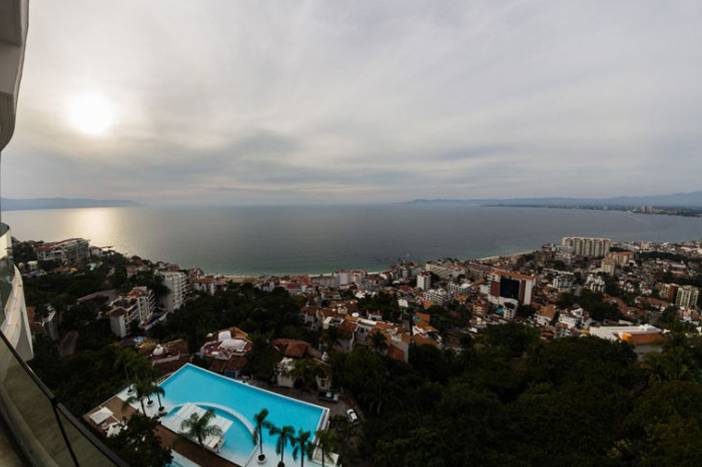The tax law changed significantly in 2014, and there’s a lot of confusion around those changes. I’m hoping to put some of that confusion to rest. Of course, it’s entirely possible with a topic like this, that you could be even more confused at the end. Not to worry – there will not be a test!
The constant about tax laws is that they are constantly changing, no matter what country you live in … and that includes our beloved Mexico. It can also be even more confusing as Notarios have had differing opinions on the interpretation of the laws over the years. That said, most Notarios now are in relative agreement with the consistency in which the 2014 tax reforms are to be interpreted and implemented.
One big thing to know – the “exemption” rules for capital gains taxes has effectively been eliminated. In other words, nobody is officially “exempt” from capital gains taxes any longer. No, this is not an attack on foreigners. The law applies to everybody, including Mexican nationals. The law states that there is a cap on exemption, which is 700,000 UDIS. A UDI is a fluctuating financial instrument which rate changes daily. As of this writing, the exemption cap translates to approximately $270,000 USD. This cap applies to an individual. If there are two individuals on title that are married or can prove that they also live in the property together, both individuals would qualify for the exemption cap, thus allowing for a $540,000 USD exemption. But this does not extend to multiple family members, etc, as it is unlikely that all parties on title actually use the home for their principal residence. Remember, the exemption applies to RESIDENCES that are used and occupied as the PRINCIPAL RESIDENCE of the owner(s).
Does this mean you’re exempt up to over a half million dollars in capital gains? No. It means that the value of the property up to 700,000 UDIS (approx. $270,000 USD) or in the case of a couple, approximately $540,000 USD, could be exempt from being taxed. Any gain over and above that figure is taxed at the current rate of 35%. You are legally allowed certain deductions against any tax that would be levied.
In addition, you can’t just get the UDIS “exemption” for the asking. You must qualify. And the list is extensive. You must have ALL of the following: Residente Temporal (working status) with monthly tax declarations or Residente Permanente (working or non-working status); RFC for either Temporal or Permanente; a constancia (official proof) of fiscal residence from Hacienda; AND original receipts of electric or water bill with the seal of payment on the bill or a payment ticket. If you have all but any one singular item, you do not qualify.
Any capital improvements you have made to the property are deductible, as long as you have the necessary facturas to support the improvements. Furnishings are not improvements. Neither are certain things you might not suspect. Fans and light fixtures are not improvements. Neither are toilets. Yes, even though they are affixed. Kitchen cabinets are not necessarily considered improvements, as they potentially could be taken. A room addition is a capital improvement. New flooring is a capital improvement. Installation of a swimming pool is a capital improvement. If you do not have your facturas, if you have before/after photos and a list of improvements, you can also solicit an improvement appraisal to attempt to increase your basis. There is a cost associated with this, as well as certain requirements that must also be met, and only a percentage of your improvements are considered, but this could be less expensive than the tax. A portion of your purchase closing costs could also be used as a deduction against your tax obligation. However, you will need to have the original facturas or they will not count. Brokerage fees are also deductible as long as you are paying the respective IVA charge to secure the factura.
It is also important to note that even though you paid a certain price for a property and sold it at the same price or less you could still have capital gains taxes. Remember that when you purchased your property, the price was recorded in the peso exchange rate at the time you purchased. As we’ve discussed in previous articles, the exchange rate of today could be considerably different than in the past. So even though you may have paid $100,000 USD for your property at an exchange of 9 ($900,000 pesos), and sell it today for $100,000 at an exchange rate of 12 ($1.2M Mexican pesos), the basic math on this reflects a gain of $300,000 pesos, subject to the tax and all applicable deductions.
When working with a seller, I always have the capital gains tax calculation determined at the time of securing the listing. This way, the seller is able to ask whatever questions are appropriate at that time, rather than be surprised by it when negotiating an offer. At that point, it’s too late and you could potentially lose a deal over it. Better to know up front, in my opinion—good or bad. Of course, keep in mind, no matter what information has been provided when, laws are subject to change, including tax laws, at any time. Nobody, not the Notario, not the Realtor, not even the government, can guarantee what your ultimate tax obligation will or won’t be from day to day. Best to stay informed and work with a professional who is up to speed on the current laws.
To view a video from Wayne Franklin, click here and select 'Video' to the right hand side of the page.






